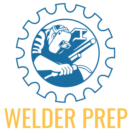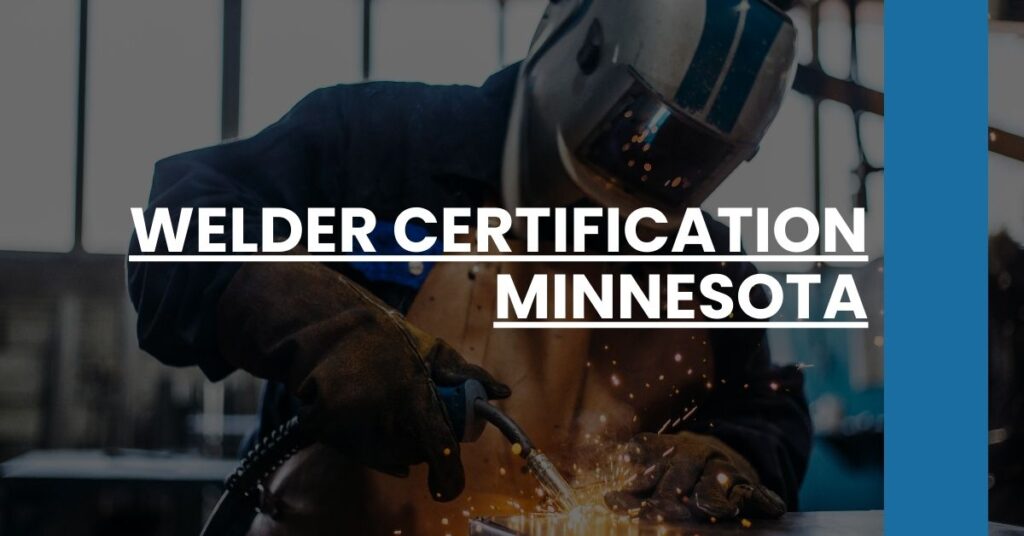Looking for schools in a specific city? Check out our lists of Welder Schools in Minneapolis, St. Paul, and Rochester.
Obtaining your Welder Certification in Minnesota can open doors to numerous career opportunities in fields like construction and manufacturing.
Ensuring you have the correct certification is crucial for adhering to stringent industry standards and maximizing your job prospects. I know navigating the certification process might seem complex, but don’t worry—our team has put together a comprehensive guide to clarify everything you need to know:
- Detailed steps for obtaining Welder Certification in Minnesota
- Top welding schools and programs in Minnesota
- Examination requirements and costs involved
- What Is Welder Certification and Why Is It Important?
- How to Get Welder Certification in Minnesota
- Top Welding Schools and Training Programs in Minnesota
- Required Examinations and Tests for Certification
- Costs Associated with Welder Certification in Minnesota
- Renewing and Maintaining Your Certification
- Career Opportunities for Certified Welders in Minnesota
- Tips for Success: How to Excel in Your Welding Career
- Best Welding Schools in the US
- Looking for Welder Information On States Bordering Minnesota?
- Conclusion
What Is Welder Certification and Why Is It Important?
Welder certification in Minnesota is an essential credential that demonstrates your competence and adherence to industry standards. Certification verifies that you possess the skills necessary to create reliable, high-quality welds. This is crucial in sectors like construction and manufacturing, where weld quality directly impacts structural integrity and safety.
Industry Standards and Requirements
In Minnesota, industry standards often align with the American Society of Mechanical Engineers (ASME) Section IX. This standard specifies the processes for qualifying welders, ensuring they can consistently perform welds that meet safety and quality requirements. By adhering to these standards, you not only meet legal requirements but also secure better job opportunities.
Benefits of Certification
1. Career Advancement: Certified welders are more competitive in the job market. Employers look for certified professionals who can guarantee quality and safety in their work.
2. Safety Assurance: Proper certification ensures that welders are trained in safe procedures, reducing the risk of accidents.
3. Professional Recognition: Achieving certification can make you eligible for higher-paying positions and more complex projects.
How to Get Welder Certification in Minnesota
Gaining welder certification in Minnesota involves several steps, from meeting educational prerequisites to passing examinations. Here is a detailed guide to help you through the process.
Educational Prerequisites
Before you can pursue certification, you need to complete specific educational requirements. Enroll in a recognized welding program to gain foundational knowledge and hands-on experience.
Training Programs
Practical Training
Minnesota offers various training programs tailored for aspiring welders. These programs usually cover:
- Fundamentals of Welding: Basic techniques and safety measures.
- Advanced Welding: Specialized methods and applications.
- Hands-On Practice: Direct application of skills on welding projects.
By completing a training program, you’ll be well-prepared to take on the certification process.
The Certification Process
Step-by-Step Process:
- Complete a Training Program: Enroll in and complete a welding program from a recognized institution.
- Prepare Documentation: Organize your Welding Procedure Specification (WPS) and Procedure Qualification Record (PQR).
- Register for the Exam: Sign up for a certification exam administered by qualified bodies such as the American Welding Society (AWS).
- Take the Exam: Pass both theoretical and practical components of the exam.
For more detailed instructions, visit how to become a welder.
Top Welding Schools and Training Programs in Minnesota
Choosing the right welding school or training program is critical for your certification success. Below are some of the top welding schools in Minnesota that offer comprehensive training programs.
Dunwoody College of Technology
Located in Minneapolis, Dunwoody College offers a thorough welding training program. Their curriculum covers welding theory, lab exercises, and hands-on practice. The program is designed to prepare you for various certification exams.
Minnesota State Colleges and Universities (MnSCU)
MnSCU has multiple campuses that offer welding programs. Locations include Alexandria, Anoka, and Brainerd. These programs are beneficial for their flexible scheduling and availability of financial aid.
L&M Radiator Apprenticeship
L&M Radiator in Hibbing offers a unique 24-month paid welding apprenticeship program. This program combines on-the-job training with academic coursework, providing a balanced approach to learning.
For a more extensive list of welding programs, explore welding programs.
Required Examinations and Tests for Certification
To earn your welder certification in Minnesota, you must pass specific examinations that focus on your practical abilities and theoretical knowledge.
Types of Exams
Practical Test
The certification process includes various practical tests based on welding procedure specifications. These tests assess your ability to produce sound welds under specific conditions.
Theoretical Test
In addition to practical assessments, you will also need to pass a theoretical exam. The American Welding Society (AWS) certification exams are standard across Minnesota. These exams measure your understanding of welding principles, safety standards, and industry practices.
Preparation Tips
1. Study Materials: Use AWS guidelines and educational resources to prepare. 2. Practical Practice: Engage in regular welding practice sessions to refine your skills. 3. Mock Exams: Take practice tests to familiarize yourself with exam formats and time constraints.
Explore practice tests to help you get ready.
Costs Associated with Welder Certification in Minnesota
Securing your welder certification entails several expenses, from tuition fees to examination costs.
Tuition Fees
The cost of enrolling in a welding program can vary widely based on the length and comprehensiveness of the curriculum. Expect tuition fees to range from $1,000 to $15,000.
Examination Fees
Certifying bodies like AWS charge fees for certification exams. These costs typically fall between $200 and $500. Make sure to budget for these expenses as part of your certification journey.
Additional Expenses
- Materials and Equipment: You may need to invest in your own welding gear and safety equipment.
- Renewal Fees: Certification renewals may also involve additional costs.
By understanding and planning for these costs, you can effectively manage your resources and focus on achieving your certification.
Renewing and Maintaining Your Certification
Keeping your welder certification up-to-date is crucial for sustaining your career momentum and ensuring compliance with industry standards. Here’s how you can stay certified and advance your welding profession.
Renewal Period
In Minnesota, welder certifications typically require renewal every six months to three years, depending on the type of certification you hold. It’s essential to be aware of the specific renewal timeframes for your particular certification.
Continuing Education
Maintaining your certification often involves participating in continuing education programs. These can include:
- Advanced Welding Courses: Enhance your existing skills with specialized training.
- Safety Courses: Stay current with the latest safety protocols and regulations.
- Workshops and Seminars: Attend industry-related events to learn new techniques and network with professionals.
Practice Log
Most certifying bodies require you to maintain a practice log that documents your continued welding activities. This log serves as proof that you are actively using your certified skills.
Re-Certification Exams
Some certifications may require you to pass re-certification exams periodically to demonstrate your ongoing competence. These exams often test your theoretical knowledge and practical skills.
Being proactive about maintaining your certification can help you stay competitive and demonstrate your commitment to professional development.
Career Opportunities for Certified Welders in Minnesota
Certification opens up a wide array of career paths in Minnesota’s booming industries. Whether you’re just starting or looking to advance, the opportunities are abundant.
Industries with High Demand
Minnesota’s diverse economy provides strong demand for certified welders in various sectors:
- Construction: Certified welders are essential for building infrastructure, including bridges and buildings.
- Manufacturing: Companies like Polaris Industries and 3M constantly seek skilled welders for their production lines.
- Mining: Operations like USX Minntac and ArcelorMittal Minorca Mine require certified welders for maintenance and new construction.
Types of Employers
You’ll find career opportunities with numerous types of employers:
- Private Corporations: Many companies across different sectors employ welders.
- Government Agencies: State and local governments often need welders for public works projects.
- Union Jobs: Joining a welding or construction union can provide additional job security and benefits.
Average Salaries
Certified welders in Minnesota can enjoy competitive salaries, frequently higher than the national average:
- Entry-Level Positions: $40,000 – $50,000 annually
- Mid-Level and Senior Welders: $50,000 – $70,000 annually
- Specialized Welding Jobs: $70,000 – $90,000 annually
Certifications, experience, and specialized skills can significantly influence your earning potential.
Tips for Success: How to Excel in Your Welding Career
Achieving long-term success in your welding career requires more than just certification. Here are some actionable tips to help you excel:
Master Various Techniques
Diversify your skill set by mastering multiple welding techniques such as TIG, MIG, and Stick welding. This versatility can make you more attractive to employers.
Prioritize Safety
Always adhere to safety protocols. Consistently wearing appropriate protective gear and following safety guidelines can minimize injuries and boost your reputation as a reliable professional.
Engage in Continuous Learning
Stay updated with the latest technologies and industry trends by taking advanced courses and attending workshops. Continual improvement of your skills sets you apart from the competition.
Network with Industry Professionals
Join trade associations like the American Welding Society (AWS) and other local organizations. Networking can lead to job opportunities and mentorship from experienced welders.
Seek Feedback
Regularly seek constructive feedback from supervisors and colleagues to identify areas for improvement. Actively working on these areas can enhance your skills and performance.
Best Welding Schools in the US
While Minnesota offers excellent local options, considering top welding schools across the United States can provide broader perspectives and advanced training opportunities.
Lincoln Electric Welding School
Located in Ohio, Lincoln Electric offers programs that cover a wide range of welding techniques and certifications.
Tulsa Welding School
With campuses in Tulsa, Oklahoma, and Jacksonville, Florida, this school provides hands-on training with expert instructors.
The Hobart Institute of Welding Technology
Based in Ohio, Hobart offers extensive programs focused on both basic and advanced welding techniques.
For more information, explore the best welding schools.
Looking for Welder Information On States Bordering Minnesota?
In addition to Minnesota, we suggest looking for schools in nearby states.
- Welder Certification Wisconsin
- Welder Certification Iowa
- Welder Certification North Dakota
- Welder Certification South Dakota
- Welder Certification Michigan
Conclusion
Securing your welder certification in Minnesota is a vital step towards a rewarding and stable career. With thorough preparation, continuous learning, and adherence to industry standards, you can excel in this dynamic field. Start your certification journey by exploring the best training programs and resources available to you.
Understanding the complete process, from obtaining your initial certification to maintaining and renewing it, positions you as a certified welder ready to take on exciting job opportunities and build a prosperous career. Get started today and set the foundation for a successful and fulfilling career in welding.

